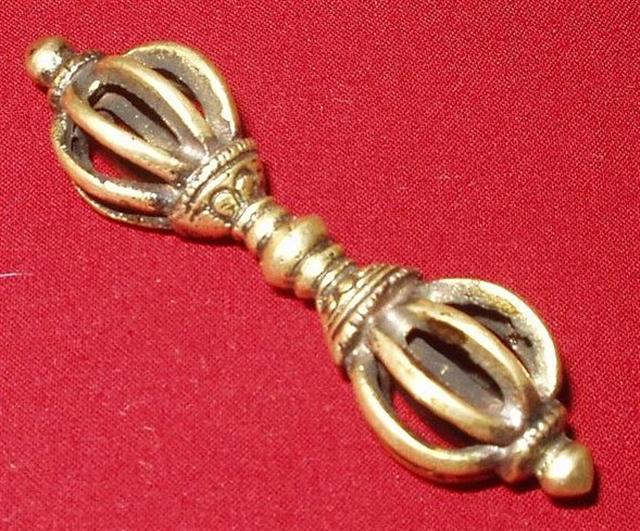5. The curious form of the puo glyph type has not yet got any good explanation, but I can now suggest a possibility - it could be the outline of the Indian 'sacred jawbone', the Vajra:
... In the Babylonian creation epic, which antedates Samson, Marduk uses the Hyades as a boomeranglike weapon to destroy the brood of heavenly monsters. The whole story takes place among the gods. It is known, too, that Indra's powerful weapon, Vaira, the Thunderbolt made of the bones of a horse-headed Dadhyank, was not of this earth ... "Vajra is a Sanskrit word meaning both thunderbolt and diamond. As a material device, the vajra is a ritual object, a short metal weapon - originally a kind of fist-iron like Japanese yawara - that has the symbolic nature of a diamond (it can cut any substance but not be cut itself) and that of the thunderbolt (irresistible force) ... The earliest mention of the Vajra is in the Rigveda, believed to have been composed between 1700 and 1100 BCE. It is described as the weapon of Indra, the god of heaven and the chief deity of the Rigvedic pantheon. Indra is described as using the Vajra to kill sinners and ignorant persons. The Rigveda states that the weapon was made for Indra by Tvastar, the maker of divine instruments. The associated myth describes Indra using the Vajra, which he held in his hand, to slay the Asura Vritra, who took the form of a serpent." (Wikipedia) If a vajra is a sign of the irresistible force of Spring Sun north of the equator it should perhaps be changed into its opposite south of the equator - to a sign of dull nonmoving dark earth. At this point we have to look at the first glyphs in the text on the London Tablet (K):
I once reconstructed the number of glyphs (including vacant places) on K to be probably 192, a number which at that time meant nothing to me. Since then I have realized that 192 could refer e.g. to half 13 * 29½. The K text is 472 - 192 = 280 glyphs shorter than the G text and the parallels between G and K show that the text on side b of G is not present in any form in the text of K. Both side a and side b on the London Tablet are needed to cover the subject on the front side of G. So far everything seems clear. However, even if the glyphs of the K text to a large extent can be put in parallel with the glyphs on side a of G the signs evidently are opposite. Puo in Ka1-1 and Ka1-2 for example are drawn with open instead of closed outlines:
Perhaps it means the stars referred to should be looked for in the evening instead of in the morning or in autumn instead of spring. One conclusion to be drawn from puo in Ka1-1--2 is that puo in Gb8-30 probably belongs not at the end of the back side but at the beginning of the front side. Double 'maro' (of a kind) strings at the end of side b tend to affirm this conclusion:
6 glyphs in G seem to correspond to 4 glyphs in the K text. Aldebaran at Ga1-4 will now be at a Moonday, which is quite in order because Moon marks where the rule of Sun is ending - south of the equator Ana-muri is the last star and not the first star. But if Aldebaran is also at Ka1-3, then it apparently is at the other end, where Venus indicates a place of birth. The first stars in the enchanted jawbone (the Hyades) will in G now be ruled by Mercury and Jupiter, they indicate the end of the Old Rule which soon will be changed into the rule of Mars and Spring. The Old Rule is the Dark Rule of Saturn and Ain (the 'eye') could south of the equator be a pair of small eyes (cfr at left in Ga1-2), and presumably these eyes are nearly blind: ... When her stomach had resumed its normal size the old woman asked him, 'Are you Maui?' and he answered in a respectful voice: 'Even so.' Then she drew near and peered at him with her eyes that were nearly blind. 'Why did you cheat your old ancestress like that?' she said. 'Why have you been hiding my dinner, so that I have had nothing to eat these many days?' And she pointed with a crooked finger to her toothless and empty mouth ... It should be added that in The Arrow of Time I have suggested the front side could begin even earlier, and now when we can perceive Zaurak (the boat) to be at Gb8-26 it is possible to see a beginning there:
|
|||||||||||||||||||||||||||||||||||||||||||||||||||||||||||||||||||||||||||||||||||||||||||||||||||||||||||||||||||||||











